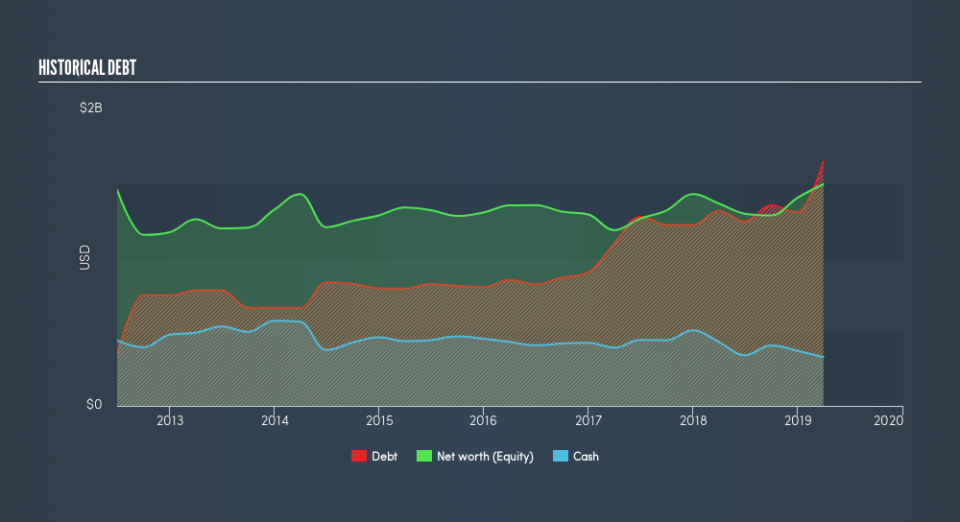Genpact Limited (NYSE:G): Time For A Financial Health Check

Small-caps and large-caps are wildly popular among investors, however, mid-cap stocks, such as Genpact Limited (NYSE:G), with a market capitalization of US$6.9b, rarely draw their attention from the investing community. However, generally ignored mid-caps have historically delivered better risk adjusted returns than both of those groups. Let’s take a look at G’s debt concentration and assess their financial liquidity to get an idea of their ability to fund strategic acquisitions and grow through cyclical pressures. Note that this information is centred entirely on financial health and is a top-level understanding, so I encourage you to look further into G here.
Want to participate in a short research study? Help shape the future of investing tools and you could win a $250 gift card!
Check out our latest analysis for Genpact
Does G Produce Much Cash Relative To Its Debt?
Over the past year, G has ramped up its debt from US$1.3b to US$1.6b – this includes long-term debt. With this growth in debt, G currently has US$329m remaining in cash and short-term investments to keep the business going. Additionally, G has generated cash from operations of US$361m in the last twelve months, leading to an operating cash to total debt ratio of 22%, meaning that G’s debt is appropriately covered by operating cash.
Can G pay its short-term liabilities?
At the current liabilities level of US$1.0b, it appears that the company has been able to meet these commitments with a current assets level of US$1.4b, leading to a 1.38x current account ratio. The current ratio is calculated by dividing current assets by current liabilities. For IT companies, this ratio is within a sensible range as there's enough of a cash buffer without holding too much capital in low return investments.
Is G’s debt level acceptable?
G is a highly-leveraged company with debt exceeding equity by over 100%. This is not unusual for mid-caps as debt tends to be a cheaper and faster source of funding for some businesses. No matter how high the company’s debt, if it can easily cover the interest payments, it’s considered to be efficient with its use of excess leverage. A company generating earnings after interest and tax at least three times its net interest payments is considered financially sound. In G's case, the ratio of 9.38x suggests that interest is appropriately covered, which means that lenders may be less hesitant to lend out more funding as G’s high interest coverage is seen as responsible and safe practice.
Next Steps:
Although G’s debt level is towards the higher end of the spectrum, its cash flow coverage seems adequate to meet obligations which means its debt is being efficiently utilised. Since there is also no concerns around G's liquidity needs, this may be its optimal capital structure for the time being. Keep in mind I haven't considered other factors such as how G has been performing in the past. You should continue to research Genpact to get a better picture of the mid-cap by looking at:
Future Outlook: What are well-informed industry analysts predicting for G’s future growth? Take a look at our free research report of analyst consensus for G’s outlook.
Valuation: What is G worth today? Is the stock undervalued, even when its growth outlook is factored into its intrinsic value? The intrinsic value infographic in our free research report helps visualize whether G is currently mispriced by the market.
Other High-Performing Stocks: Are there other stocks that provide better prospects with proven track records? Explore our free list of these great stocks here.
We aim to bring you long-term focused research analysis driven by fundamental data. Note that our analysis may not factor in the latest price-sensitive company announcements or qualitative material.
If you spot an error that warrants correction, please contact the editor at editorial-team@simplywallst.com. This article by Simply Wall St is general in nature. It does not constitute a recommendation to buy or sell any stock, and does not take account of your objectives, or your financial situation. Simply Wall St has no position in the stocks mentioned. Thank you for reading.

